
Speaker's Biographies
25th Annual Preservation Conference of the National Archives and Records Administration
March 16 and 17, 2011
Speaker's Biographies
In Order of Appearance in the Conference Program
David S. Ferriero
David S. Ferriero was sworn in as 10th Archivist of the United States on November 13, 2009.
Previously, Mr. Ferriero served as the Andrew W. Mellon Director of the New York Public Libraries (NYPL). In this position he was part of the leadership team responsible for integrating the four research libraries and 87 branch libraries into one seamless service for users; and was in charge of collection strategy; conservation; digital experience and strategy; reference and research services; and education, programming, and exhibitions.
Before joining the NYPL in 2004, Mr. Ferriero served in top positions at two of the nation's major academic libraries, the Massachusetts Institute of Technology in Cambridge, MA, and Duke University in Durham, NC.
Mr. Ferriero earned bachelor's and master's degrees in English literature from Northeastern University in Boston and a master's degree from the Simmons College of Library and Information Science, also in Boston. He served in the Navy during the Vietnam War.
Dr. Michael J. Kurtz
Michael J. Kurtz recently retired from his position as Assistant Archivist for Records Services - Washington, DC, with responsibility for all records management, archival, and public outreach program functions performed by the National Archives and Records Administration (NARA) in the Washington, DC area. He joined the National Archives in 1974 and has worked in various archival and staff positions in the Office of Federal Records Centers, the Office of Management and Administration, and the Office of the National Archives.
He also serves as an adjunct professor in the University of Maryland's College of Information Studies, teaching a course on the management of cultural institutions. Dr. Kurtz received his B.A. degree (1972) in history from The Catholic University of America, and his M.A. (1974) and Ph.D. (1982) in modern European history from Georgetown University. He was inducted into Pi Gamma Mu, Phi Beta Kappa, and received the Phi Alpha Theta award for outstanding scholarship in history given by Catholic University in 1972.
Dr. Kurtz has published articles and monographs in the areas of archival management and American history, with an emphasis on the Civil War, World War II and the post-war era, and religious and cultural history. His publications include: America and the Return of Nazi Contraband: The Recovery of Europe's Cultural Treasures (2006); Managing Archival and Manuscript Repositories (2004); "Strategic Planning and Implementation at the National Archives and Records Administration," in Leadership and Administration of Successful Archival Programs (2001); "Archival Management", in Managing Archives and Archival Institutions (1988); Nazi Contraband: American Policy on the Return of European Cultural Treasures, 1945-1955; and "Emancipation in the Federal City" in Civil War History (September 1978).
Dr. Kurtz served as chair of the Archives Management Roundtable of the Society of American Archivists, from 1987-2001. He was president of the Lutheran Historical Society from 1990 until 2001.
Dr. Steven P. Hamburg
Steven Hamburg is chief scientist of the Environmental Defense Fund and is an ecosystem ecologist. Trained at Vassar College, Yale and Stanford Universities he has been involved in biogeochemistry research for 25 years. He has published more than 80 scientific papers on biogeochemistry, climate change impacts on forests and carbon accounting approaches and methodologies and has served as a lead author for the IPCC. His involvement with the IPCC resulted in his being acknowledged as one of the contributing recipients of the 2007 Nobel Peace Prize. He was awarded the EPA Environmental Merit Award twice for his climate change related work and was on the faculty of Brown University for 15 years where he was the founding director of the Global Environment Program at the Watson Institute for International Studies.
Jerry Podany
Jerry Podany is the senior conservator of antiquities for the J. Paul Getty Museum. From 1999 to 2003, he served two terms as president of the American Institute for Conservation, and is now in his second elected term as president of the International Institute for Conservation. He was awarded the AIC Rutherford John Gettens Award, which recognizes outstanding service to the profession, and the Engineering Research Institute’s Heritage Innovation Prize, which recognizes outstanding contributions in the development of innovative solutions to preserve heritage. His fieldwork includes work at Terqa in Syria, the Athenian Agora, and the Roman Forum of Trajan, and the hominid trackway in Laetoli, Tanzania. He is an adjunct professor at University of Southern California, and has published widely in the field of conservation, disaster mitigation and response, and on the history of restoration. Podany has developed a series of collaborative conferences, on protecting collections from earthquake damage, in Turkey, Athens, Japan, and Italy. These conferences have resulted in the publication Advances in the Protection of Museum Collections from Earthquake Damage.
Nancy Bell
Nancy Bell is Head of Collection Care for The National Archives, UK (TNA) and is responsible for developing and implementing preservation programs for one of the oldest and largest archives in the world. Prior to taking up this post in 2008 she headed TNA's Research and Development team that was responsible for the delivery of an integrated research program for The National Archives which included conservation science research.
In recent years she has led research projects in collaboration with University of London, Centre for Sustainable Heritage, to model indoor building environments, University of Cardiff Biophysics Group to improve our understanding of the making and meaning of Domesday Book, a 10th c. manuscript using microfocus x-ray diffraction and to study the effects of moisture on collagen based historic structures. Current work also includes the application of economic models to the management of cultural heritage. She has been Principal Investigator for the Arts and Humanities Research Council (AHRC) and the Engineering and Physical Science Research Council (EPSRC) sponsored Science and Heritage program Research Cluster, EGOR: Environmental Guidelines Opportunities and Risks. She is a member of the AHRC Peer Review College, and the AHRC Science and Heritage Program advisory panel. She has recently joined the government's Department of Cultural, Media and Sport Science and Research advisory board.
Nancy was born in the USA and educated at the University of Maryland where she studied history graduating with an MA in 1982. She received an award for the Council of Library Resources, USA to study book and paper conservation in the UK where she specialized in the conservation of medieval manuscripts. She worked for 12 years in Oxford where she established the Oxford Conservation Consortium, a unique co-operative facility to provide conservation and preservation services for the Oxford's collections. She has taught conservation in the UK and Canada and has published and lectured in this field, she is member of the Institute for Conservation, an Accredited Conservator and a specialist advisor to two award granting bodies.
James M. Reilly
James M. Reilly is the founder and director of the Image Permanence Institute at Rochester Institute of Technology in Rochester, New York, a world leader in preservation research since 1985. Jim is well known for his own research on deterioration of 19th-century photographic prints. Under his guidance, IPI has made important contributions to image preservation, management of film archives, environmental monitoring and control, and sustainable preservation practice. He oversaw the creation of the Preservation Environment Monitor datalogger and Climate Notebook software, which were supported by the National Endowment for the Humanities, the Mellon Foundation, and the Institute of Museum and Library Services.
During its tenure Jim was Co-director of the Advanced Residency Program in Photographic Conservation, a program co-managed by the George Eastman House International Museum of Photography and Film. He is the author of numerous publications, including Care and Identification of 19th-Century Photographic Prints, Preserving Photographic Collections in Research Libraries: A Perspective, New Tools for Preservation: Assessing Long-Term Environmental Effects on Library and Archives Collections, IPI Storage Guide for Acetate Film, and Storage Guide for Color Photographic Materials.
Jim is a consultant to many cultural institutions and is sought after worldwide as a teacher and seminar speaker. He was given a Technical Achievement Award from the Academy of Motion Picture Arts & Sciences in 1998. He was presented with the Silver Light Award for Lifetime Achievement from the Association of Moving Image Archivists in 2002, and was the first winner of the Hewlett-Packard Image Permanence Award from the Society for Imaging Science and Technology in 2007.
Kristen Overbeck Laise
Kristen Overbeck Laise is the Vice President for Collections Care Programs at Heritage Preservation. She directed the Heritage Health Index, the first comprehensive survey of the condition and preservation needs of U.S. collections, published in 2005 and coordinated by Heritage Preservation in partnership with the Institute of Museum and Library Services. Ms. Laise has served on various planning teams for IMLS' Connecting to Collections projects and organized the Connecting to Collections Bookshelf selection committee, authored The Bookshelf User's Guide, and selected links for the Guide to Online Resources. Ms. Laise also directs Heritage Preservation's initiative, Rescue Public Murals, and a project to assess historic monuments owned by U.S. Department of Veterans Affairs. Previously, she managed the Conservation Assessment Program, a technical assistance program for small museums administered by Heritage Preservation in cooperation with IMLS. She holds a BA in History from Earlham College and an MA in Art History from the University of Wisconsin-Madison, where she worked with the History of Cartography Project.
Laura Word
Laura Word is a Senior Program Officer in the Division of Preservation and Access at the National Endowment for the Humanities. In the division, she has had special responsibility for preservation planning and for such programs as Sustaining Cultural Heritage Collections, Preservation Assistance Grants for Smaller Institutions, Preservation and Access Education and Training, and Save America's Treasures. Before coming to the Endowment in 1991, Laura worked as an objects conservator and was the director of the Pacific Regional Conservation Center at the Bishop Museum in Honolulu, Hawai'i, where she assisted numerous museums and historical organizations with preservation projects. She earned her master's degree in museum studies/anthropology and certificate in archaeological and ethnographic conservation at the George Washington University.
Naomi Johnson Miller, FIES, FIALD, LC
Naomi Miller has landed at PNNL after ten years as the principal of Naomi Miller Lighting Design in Troy, New York. She has too many years of experience working in different facets of the lighting industry, but still finds lighting to be an ever-advancing field with creative challenges. Over 30 architectural lighting design awards hang on her wall, for projects ranging from churches to university science buildings, boutique hotels, supermarkets, and parking lots. She chaired the Illuminating Engineering Society's (IESNA) Quality of the Visual Environment committee for 8 years and was a principal member of the writing team for the IES's Light + Design: A Guide to Designing Quality Lighting for People and Buildings. She is a Fellow of the IESNA and Fellow of the IALD.
Research Interests: Lighting quality, the aging eye, health effects of light, dark skies, sustainability and energy efficiency are her passions.
Education: BS in Art and Design (Architecture), MIT, 1978; MS in Lighting, Rensselaer Polytechnic Institute, 2000
James Druzik
James (Jim) Druzik is a Senior Scientist at the Getty Conservation Institute, where he has worked since 1985. Prior to joining the Getty, Druzik was at the Los Angeles County Museum of Art for five years, and the Norton Simon Museum from 1974-1980.
Druzik's interests have always been keenly centered on preventive conservation research, beginning in the late 1970’s his work in gaseous and particulate air pollution effects on materials of cultural value.
In 2002, he began a large multi-disciplinary research program examining better techniques for safer museum lighting from which the current collaborative exhibition between the Getty Conservation Institute and the California Science Center has grown.
Druzik has served in a wide variety of advisory capacities for the National Archives and Records Administration, the Library of Congress, and the Smithsonian Institution. He has been the recipient of grants from the President's Fund of the California Institute of Technology and has written or contributed to more than 50 journal articles and book publications. Along with cocollaborator Stefan Michalski, Druzik is currently working on a reference text, Handbook of the Museum Environment, in conjunction with the Canadian Conservation Institute. Druzik holds a B.S. in Chemistry.
Dr. Jennifer K. Herrmann
Jennifer K. Herrmann is one of the research scientists at the National Archives and Records Administration. She enjoys working with the FTIR and XRF to help the conservators answer questions about the records they treat as well as working with different separation techniques to monitor the degradation process of cellulose. She also reviews the products used by holdings maintenance, exhibits, and facilities staff in order to keep a safe and clean environment for the records preserved by NARA.
Jennifer received her Ph.D. in Analytical Chemistry from the University at Buffalo, The State University of New York, and an honors bachelor degree in chemistry from Penn State. She started out in the conservation field in the National Park Service's lab at Harpers Ferry Center and also worked with ink and paper at the Bureau of Engraving and Printing.
Mark Ormsby
Mark Ormsby has been a research scientist at NARA since 1990. He has studied pollutants in storage areas and helped evaluate measures designed to save energy while maintaining appropriate environmental conditions. He has also used solid-phase microextraction to study air pollutants and off-gassing from materials. He received his M.S. in Physics from the University of Maryland and his B.A. in Physics from Grinnell College.
Michael C. Henry
Michael C. Henry, PE, AIA is Principal Engineer/Architect with Watson & Henry Associates. For the past 27 years, he has specialized, nationally and internationally, in the preservation of historic buildings, in engineered stabilization of large artifacts and in analysis and design of environments for cultural heritage collections. He is a registered Profession Engineer in New Jersey and several other states and is a registered Architect in New Jersey.
Michael received a Bachelor of Science in Mechanical Engineering from the University of Houston and a Master of Science in Engineering from the University of Pennsylvania. He is Adjunct Professor of Architecture in the graduate program in Historic Preservation at the University of Pennsylvania, and is a guest lecturer and independent study supervisor for the graduate program in Art Conservation at the University of Delaware/Winterthur. From 2005 to 2009, he taught Sustainable Strategies at the Centre for Sustainable Heritage at University College London, UK. In 2006, he received a Fulbright Distinguished Scholar award to teach and research on the topic of low energy collections environments in historic buildings. Mr. Henry has been an instructor and consultant for the Getty Conservation Institute in North Africa and Latin America.
His current and recent environmental management projects and consultations range from Ernest Hemingway's Finca Vigia near Havana, Cuba to the renovations of the subterranean archives at the Harriett Beecher Stowe Center in Hartford, Connecticut.
Shin Maekawa, Ph.D., Prof. Eng.
Shin Maekawa has been a senior scientist in charge of the Environmental Studies Laboratory of the Getty Conservation Institute, conducting research for more than 20 years on climate control technologies for heritage buildings and microclimates of cultural objects for conservation.
During the past 10 years, his research has focused on designing and testing sustainable and economical climate control strategies for historical buildings in hot-humid and marine climate regions. This research, conducted in collaboration with national and international partners, focuses on the use of humidistatically controlled ventilation and heating or dehumidification to control microbial activities (fungi and bacteria), which are the major deterioration threat to cultural institutions in the regions.
Shin earned a BS in Applied Mechanics from the University of California, San Diego, an MS in Mechanical Engineering from the University of California, Los Angeles, and a and Ph. D. in Conservation Science from Tokyo National University of Fine Arts and Music (Japan). He is a registered professional engineer (PE) in the state of California.
Mark Sprouse
Mark Sprouse is Director of Facilities and Personal Property Management Division at the National Archives and Records Administration. He came to the National Archives in 2000 after 8 years in the Foreign Service and successful tours as the Facilities Manger of the American Embassies in Pretoria, South Africa and Lisbon, Portugal. His office is in the new 1.8 million square foot state-of-the-art National Archives facility in College Park, MD., where he oversees all facility operations, maintenance and capital improvements of that building as well as the historic National Archives Building in Washington, DC. Mark also oversees all energy conservation details in the Presidential Library system. Prior to his civil service career, Mark served 23 years in the U.S. Navy and retired as a Master Chief Petty Officer.
Suzanne Hargrove
Suzanne Hargrove is the Head of Conservation at the Toledo Museum of Art. Prior to her current position at the Toledo Museum of Art, Ms. Hargrove was the Head of Objects Conservation at the Saint Louis Art Museum. Ms. Hargrove received a Master's degree with a Certificate for Advanced study in Conservation from the Buffalo State College conservation program.
Nancy Lev-Alexander
Nancy Lev-Alexander is the Head of Preventive Conservation at the Library of Congress where her duties include assessing risk and developing strategies to control environmental factors that impact the preservation of collections. She is a preservation representative to many projects and committees at the Library related to collection storage, facility renovations and specifications.
She trained at the North Bennet Street School Boston and worked for many years as a book conservator for government agencies, institutions and private clients. She has served as Chair of the Guild of Book Workers Standards of Excellence Seminars. She currently represents the Library of Congress on the National Fire Protection Association Cultural Resources Committee.
Peter Herzog
Peter Herzog is a partner in the firm of Herzog/Wheeler & Associates, an energy cost management consulting firm founded in 1984.
A major portion of Peter's work has been in the design and implementation of comprehensive energy use and cost management programs and procedures in large corporations, institutions and industrial facilities. A key component of this work is the instrumentation of existing energy-consuming devices to assess their performance and identify operating improvements that will reduce energy consumption. The firm also has extensive experience in verifying the installation and performance of energy-saving features in new commercial and institutional facilities.
Since 1999, Peter has worked with the Image Permanence Institute, a world leader in museum and library storage environment research, to analyze the performance of HVAC systems in library and archival spaces. This work is focused on improving environmental conditions while minimizing energy consumption. He has also participated with IPI in workshops designed to share what has been learned regarding the maintenance of optimal storage environments.
Rob Hummel
Rob Hummel is the President of Group 47, LLC. Formed to acquire and license the technology behind DOTS; the advanced digital archival storage media originally developed by Eastman Kodak. He is also President of Legend3D, the company that has provided 2D to 3D conversion services for such films as "Alice in Wonderland," "Green Hornet," and the first three "SHREK" films for DreamWorks.
He began his career as the director of production services for the Professional Film Division of Technicolor Laboratories, then moved on to Douglas Trumbull's visual effects company during the making of Blade Runner (1982) and to post-production work on the Oscar-nominated Tron (1982). A former president of DALSA Digital Cinema, Hummel has also served as senior vice president of production technology at Warner Bros., where he oversaw digital post-production (mastering films for digital cinema, HDTV, DVD, etc.) and digital restoration work on such classics as "Gone with the Wind" and "The Wizard of Oz." He previously worked in post-production, animation and Imagineering at Walt Disney Studios, headed animation technology at DreamWorks, and helped launch digital cinema units at Technicolor and Sony.
Hummel currently serves as the Chair of the Public Programs Committee of Academy of Motion Picture Arts & Sciences' Science and Technology Council and sits on the Scientific and Technical Awards Committee. Rob has hosted several programs at the Academy on Film Formats, Film Technology, and 3D Stereoscopic Imaging. He is also an associate member of the American Society of Cinematographers and was the editor of the 8th edition of the American Cinematographer.
Daniel Rosen
Daniel Rosen received a BS in Applied Mathematics and a BS in Computer Science from Claremont Men's College (1977). He spent 18 years at TRW Defense & Space Systems developing image processing/analysis and intelligence systems for the Department of Defense and other government agencies. He joined DreamWorks SKG at its inception in 1995 as chief engineer and in 2000 became CTO of Cinesite, the visual effects subsidiary of Eastman Kodak. He was VP of Technology at Warner Bros. from 2003 till 2007 then Head of Production Technology for Dalsa Digital Cinema.
Currently, he is a partner at Group 47, LLC. He has continued to develop innovative solutions for media pre-production, production, post production and preservation/restoration; including holding a patent on the detection and correction of defects in digital motion imagery caused by sensor defects. He has consulted with the Library of Congress and the Library & Archives Canada as well as The Academy of Motion Picture Arts and Sciences. He is an associate member of the American Society of Cinematographers and a member of AMIA, SMPTE, IEEE, ACM and The Visual Effects Society.
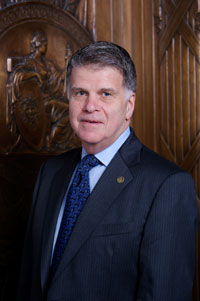 David S. Ferriero
David S. Ferriero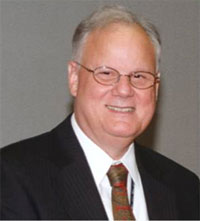 Dr. Michael J. Kurtz
Dr. Michael J. Kurtz Dr. Steven P. Hamburg
Dr. Steven P. Hamburg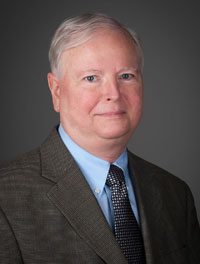 James M. Reilly
James M. Reilly Shin Maekawa, Ph.D., Prof. Eng.
Shin Maekawa, Ph.D., Prof. Eng.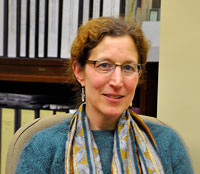 Nancy Lev-Alexander
Nancy Lev-Alexander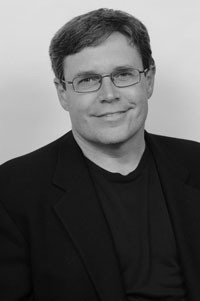 Rob Hummel
Rob Hummel